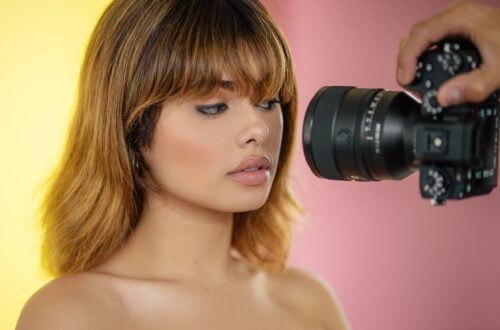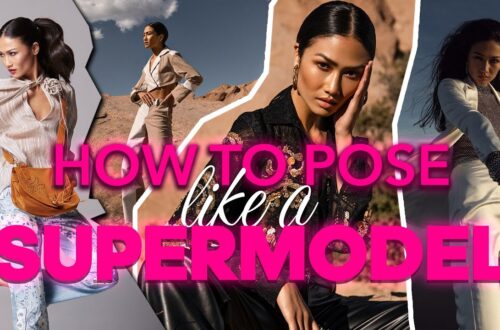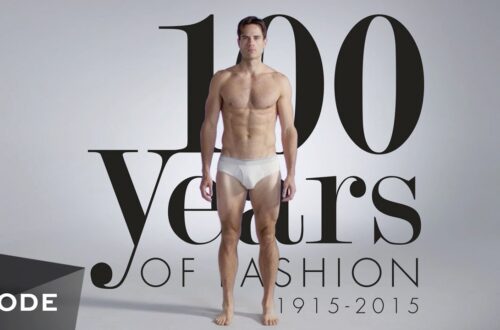Fashion photography requires a unique creative vision, technical expertise, and understanding of trends. These iconic fashion photographers shaped the industry with their innovative techniques and breathtaking images.
From Edward Steichen’s modernist imagery to Helmut Newton’s provocative nudity, these fashion photographers pushed boundaries and redefined what we think of beauty. Their contributions continue to influence and inspire contemporary fashion photographers today.
Richard Avedon
One of the most celebrated fashion photographers of the twentieth century, Richard Avedon worked across genres during his sixty-year career. His evocative portraits, often focusing on the physical details of the faces of his subjects, were highly regarded by fashion editors and the public alike. His work also explored politics, culture, and the human condition in projects ranging from civil rights demonstrations to a series of intimate portraits of convicted murderers.
Avedon first developed his interest in photography during childhood, and by the age of 12 he had begun to photograph fashion models at his family’s clothing store. He left school to join the Merchant Marine in 1942 and later studied under Alexey Brodovitch, the art director of Harper’s Bazaar. After returning home, Avedon established himself in the fashion world with his work appearing in Vogue and Life. He is credited with revolutionizing the fashion magazine format with his use of multiple exposures, allowing him to create an illusionistic depth to his images.
In his later years, Avedon began to explore other types of photography. He traveled the United States, documenting civil rights demonstrations and recording the plight of American inmates at a Louisiana state hospital. He even provided the still photographs used in the 1957 film Funny Face, starring Fred Astaire as the fictional fashion photographer Dick Avery, which was based on Avedon’s life.
The rich legacy of Avedon’s work continues to influence modern day artists, both photographers and those in other mediums. His portraits of celebrities, musicians, and public figures have become iconic cultural references that capture the zeitgeist of their respective eras. This is illustrated by the fact that his portraits of Marilyn Monroe and The Beatles are now part of the visual vocabulary of popular culture, frequently reproduced and referenced in various media.
Mert Alas & Marcus Piggott
The duo of Mert Alas and Marcus Piggott, known to the fashion world as simply Mert & Marcus, are two of the most influential forces working in fashion photography today. They forged their partnership in 1994 in England and have since created some of the most iconic images of the last two decades. Their work is highly regarded as redefining standards of glamour, luxury, and beauty, making them one of the most sought-after photographers in the industry.
Their first collaborative shoot was published in Dazed & Confused and they have since worked for forward-thinking magazines as well as shooting ad campaigns for such brands as Givenchy and Louis Vuitton. Their distinctive style is a skilful mix of old-school glamour with futuristic and synthetic, post-production gloss, reworking and redefining stereotypical depictions of women.
They often collaborate with celebrities and use their work to explore stereotypes and the power of fetishization, role playing, and fantasy. Their sexy, erotically charged and highly polished images are boldly sexual and sometimes humorous, adding to the controversy surrounding their work.
Though their influences range from Guy Bourdin to Robert Mapplethorpe and Helmut Newton, they have created their own style that is distinctly their own. They are hesitant to call themselves purely fashion photographers and constantly pull from new sources, always trying something different.
The duo live and work in a whitewashed Moorish villa on the island of Ibiza called Palacio de Salomon, which is also their studio and base of operations. They have a private beach and a rooftop pool, where they host parties during the day and invite the fashion glitterati to come hang out at night. Their charm and wit, coupled with their unique vision, have made them the most sought-after fashion photographers in the industry.
Peter Lindbergh
Peter Lindbergh was the man behind the lens for some of fashion’s most iconic images. He photographed exclusively in black and white, refusing excessive retouching, and capturing the natural beauty of his models. Lindbergh’s work is evocative, sensual, and mysterious, and has helped to define the modern standard of beauty. From his erotic portraits to his famous Pirelli calendar covers, Lindbergh’s work is timeless and iconic.
The son of photographer Edward Steichen, Victor Demarchelier broke away from his father’s shadow early in his career, creating a unique style of fashion photography that was both sophisticated and sensual. He is known for his black and white portraits of models, as well as his evocative fashion shoots. His images have graced the pages of Vogue (both British and American), Vanity Fair, Rolling Stone, and Mademoiselle, among others.
Nick Knight is one of the most iconic fashion photographers of our time, working with a variety of top fashion brands and magazines. His images are both sexy and evocative, reaching deep within the model’s soul to capture their essence. Knight’s work has also gone beyond fashion photography, shooting album covers for musicians like Kanye West and David Bowie.
Unlike some of the other iconic fashion photographers on this list, Arthur Elgort’s work is both controversial and playful. His use of light and shadow to create his surreal and whimsical pieces makes him a standout in the world of fashion photography. He has been featured in 24 Vogue covers, and is known for his work involving nude models and sexual themes. His quirky sense of humor and whimsy make his work instantly recognizable. His work is both haunting and beautiful, and he has been called “a legend” by many of his peers.
Helmut Newton
Helmut Newton pushed boundaries with his strong, sensual, and occasionally lurid depictions of women from the ’50s through the ’80s. He often provoked criticism from feminists for crossing the line between art and pornography, but he continued to explore his themes regardless. The self-proclaimed “gun for hire” had a long career shooting for magazines like Vogue, Elle and Queen. Nearly 500 of his iconic editorial photos are on display at the Berlin based Helmut Newton Foundation.
Newton was born into a Jewish family in Germany in 1920 and learned his craft as an apprentice of the German fashion photographer Yva. He was just 16 when the increasing persecution of Jews forced his family to flee Germany for Australia. Newton opened his own photo studio in Melbourne, and eventually moved to Paris where he started working for French Vogue.
In 1975, he shot this seminal image of model June Brunell on the cobblestoned Rue Aubriot in Paris. The black-and-white photograph juxtaposes the elegant dresses by Yves Saint Laurent with the somber backdrop of the Pere Lachaise cemetery, creating a sense of intrigue and mystery. Newton’s masterful use of shadows and contrast creates a sense of depth, and the commanding pose of the model highlights the strength and confidence that Saint Laurent’s designs were intended to evoke in women.
Newton incorporated elements of erotic and fetishistic themes into his work, and he preferred to shoot outside of the studio. He searched for turn-of-the-century mansions, elegant villas and distinguished hotels to stage his scenes. In 1981, he produced an iconic shoot featuring Kristine DeBell and Nastassja Kinski for Playboy that was both controversial and sexy. It was this type of work that made him a household name and sparked debate about the depiction of women in the media.
Irving Penn
Having studied painting and graphic design in Philadelphia, Penn purchased his first camera in 1938 and worked during World War II as an ambulance driver (he couldn’t serve as a soldier due to heart problems). Afterwards, he was hired at Vogue, where he began photographing covers. Initially, his work was editorial, but Penn soon started exploring fashion-oriented subjects, including still life arrangements of geometric purity or reclaimed trash and portraits of the wealthy, fashionable people who could afford to wear designer clothing.
Penn was able to bring his artistic perspective to these assignments, which allowed him to transcend the conventions of magazine photography and transform the medium. In the process, he developed many of the aesthetics we associate with contemporary fashion.
For example, he embraced the idea of a “flat” image and used a shallow depth of field to isolate his subjects from their surroundings. He also often shot his models in a studio, where he was able to control their environment and pose them according to his creative vision.
He was also interested in embracing cultural differences and exoticism, which he utilized in his travels for Vogue. During this period, he photographed members of the exiled radical art elite—Salvator Dali, Marcel Duchamp, Max Ernst, and others—who were popular with an American audience hungry for a sense of artistic identity.
Penn’s last great project was the series of nudes he created in 1949–50, in which he portrayed fleshy models whose corpulent undulations were highlighted by close-up shots and experimental printing techniques. It is hard to know if Penn was the first photographer to employ these stylistic elements, but his success with them helped to make them mainstream and prevalent in modern photography.



